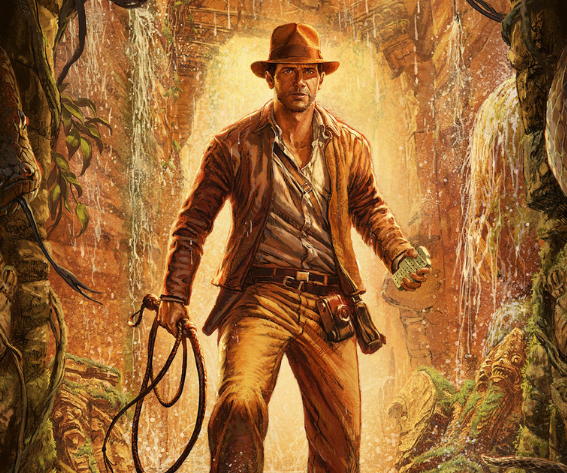When it comes to cinematic storytelling, the Scandinavian film industry has carved its own niche with distinct characteristics that set it apart from the Hollywood glitz and Bollywood drama. And I have, especially recently, really felt the need to evade from the old, tired backdrops and conventions, and taste something a bit more different. From the fjords of Norway to the snow-covered landscapes of Sweden, Scandinavian cinema offers a unique cinematic experience that captivates audiences worldwide. Let’s dive into the six main characteristics that define this captivating film tradition.
1. Minimalism Speaks Volumes
Scandinavian cinema is known for its understated yet powerful approach to storytelling. Rather than relying on flashy special effects or elaborate sets, these films often focus on the subtleties of human emotions and relationships. Think of it as a cinematic form of “less is more.” This minimalistic approach allows the audience to connect deeply with characters and themes, creating an intimate and introspective viewing experience. Think about the highly emotional yet extremely subtle representation of the main character’s plight from ‘The Hunt‘, for instance, or the extremely simple premise for the immeasurably complex ‘Rams‘.
2. Dark and Brooding Themes
If you’ve ever watched a Scandinavian film, you’ll know that sunshine and rainbows aren’t always on the menu. It’s no wonder that Scandinavia pretty much defines the ‘nordic noir’ genre. Many of these movies explore dark and brooding themes, often delving into complex psychological landscapes. From the inner demons of characters to societal issues like isolation and existential crises, Scandinavian cinema isn’t afraid to confront the darker corners of the human experience. It’s this willingness to tackle uncomfortable topics that gives these films a raw and authentic edge. Even comedies, such as ‘Another Round‘, are rooted into dark themes – in this case, alcoholism.
3. Connection to Nature
Scandinavia’s stunning natural landscapes play a pivotal role in many films from the region. Whether it’s the fjords of Norway, the dense forests of Sweden, the desolate coasts of Iceland or the icy expanses of Finland, nature is more than just a backdrop – it’s a character in its own right. Directors skillfully use these breathtaking environments to enhance the mood and atmosphere of their stories. The vast, untouched landscapes often mirror the emotional journeys of the characters, creating a unique synergy between the human experience and the natural world. Think about the fact that the main ‘character’ of ‘Under the Tree‘ – and certainly the central plot element – is a tree.
4. Realism with a Dash of Fantasy
Scandinavian cinema strikes a delicate balance between realism and fantasy. While the stories are grounded in everyday life, there’s often a touch of the surreal or fantastical that adds an intriguing layer to the narrative. This blend of the ordinary and the extraordinary invites audiences to ponder the boundaries between reality and imagination. It’s like watching the magic of a fairy tale unfold in the midst of the mundane. Whether it’s delving into the immeasurate depth of Norse mythos, or simply jumping in another direction altogether like the Icelandic Netflix series ‘Katla‘, there is always plenty of potential.
5. Strong Social Commentary
Scandinavian filmmakers aren’t ones to shy away from societal critique. Many films from the region are rich with social commentary, addressing pertinent issues such as class disparity, political corruption, and cultural identity. These films encourage viewers to reflect on the world around them and consider the implications of their actions. By weaving these themes into their stories, Scandinavian directors create thought-provoking narratives that resonate far beyond the screen. Probably the best examples are Ruben Ostlund’s films – ‘Force Majeure‘, ‘The Square‘, and even ‘Triangle of Sadness‘ if we can still consider it a Scandinavian film.
6. Compelling Characters and Performances
One of the hallmarks of Scandinavian cinema is the depth and complexity of its characters. From troubled antiheroes to resilient protagonists, these films are populated by individuals who feel real, flawed, and relatable. The performances of the actors are often understated yet incredibly powerful, drawing audiences into the emotional core of the story. It’s not uncommon for characters to experience profound personal growth or transformation throughout the course of a film, making their journeys all the more compelling to follow. And performances are oftentimes extraordinary – Mads Mikkelsen and Claes Bang should have definitely won an Oscar until now, but top performances also come from virtually unknown casts – such as the one from the excellent Roy Andersson absurd comedy ‘A Pigeon Sat on a Branch Reflecting on Existence‘.
In conclusion, Scandinavian cinema offers a cinematic experience that is both unique and captivating. Its minimalist approach, exploration of dark themes, connection to nature, blend of realism and fantasy, strong social commentary, and compelling characters all contribute to a distinct storytelling style that sets it apart from other film traditions. So, the next time you’re looking to broaden your cinematic horizons, consider diving into the world of Scandinavian cinema. You might just find yourself transported to a realm where raw emotions, stunning landscapes, and thought-provoking narratives collide in the most captivating way.









Leave a reply